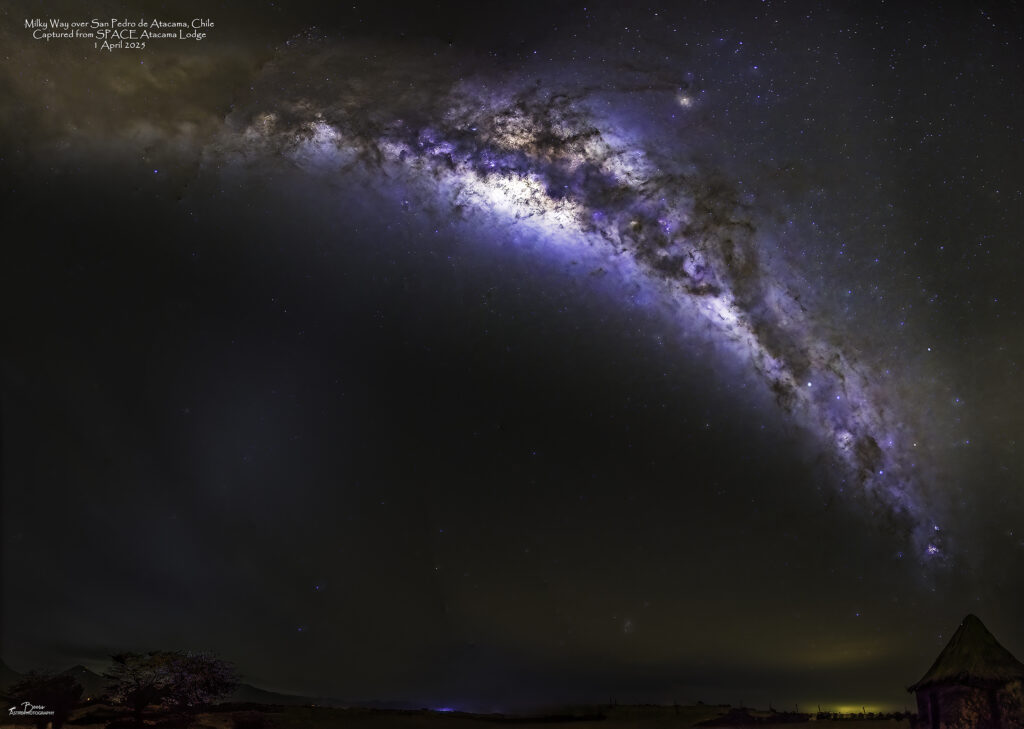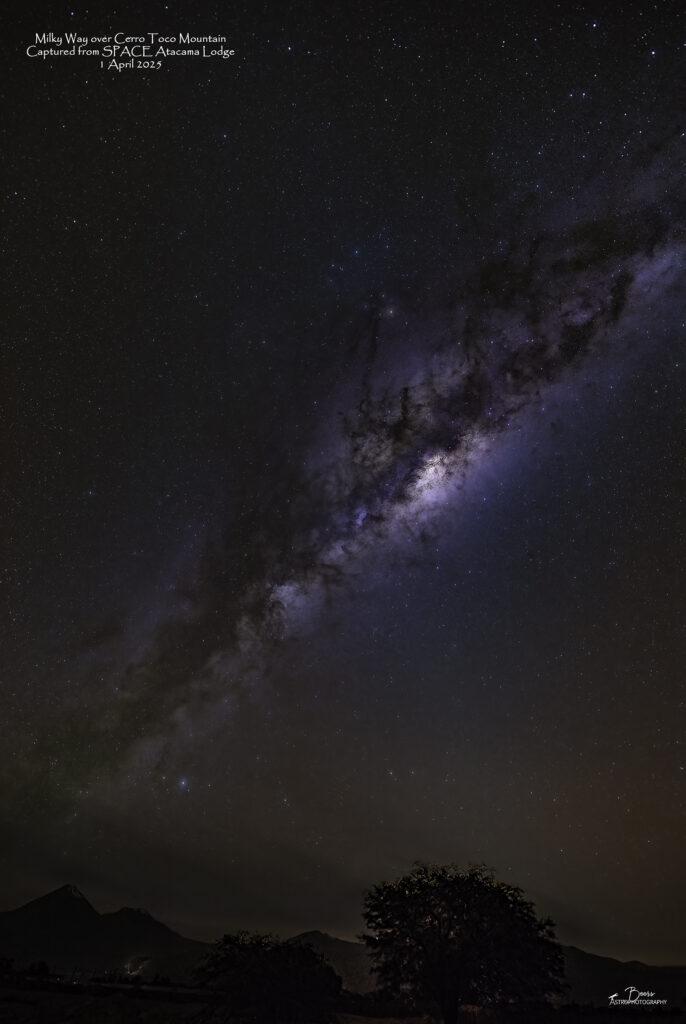


Capture Notes
During the 2025 trip to San Pedro de Atacama Celestial Explorations (SPACE) Atacama Lodge, I was initially planning to image a DSO on my last night, then quickly disassemble and pack-up my equipment for my scheduled departure from the lodge to the Calama airport NLT 10:30CDT (for my 14:00CDT flight departure). I was feeling a little uneasy with that plan. On 30Mar2025, when I was outside tending to IC4604 Rho Ophiuchi’s meridian flip at 05:25CDT, I marveled at how the Milky Way stretched from horizon to horizon! I decided then and there that I would pack up the DSO imaging equipment during the day on Tuesday and image the Milky Way overnight on Tuesday. Both giving myself a “full” night to concentrate on capturing the Milky Way and relieving the stress I was feeling about disassembling and packing up all my DSO equipment on the morning of my departure.
So, on Monday night, I set my alarm set for 04:00, since that is when the Milky Way was going to be directly overhead. I wasn’t sleeping well, so when I was “wide awake” at 03:15CDT I decided to get up and start the imaging process. I started with a set of images looking east toward the mountains, then switched to a set of images looking east capturing the little hut behind Lodge#1 in the foreground. Then, I decided to capture tiles for a panoramic view – horizon to horizon.
I had a few battery issues – the camera, the hand controller, and then finally the part of the controller that is on the top of the camera. I replaced the camera battery and the hand controller, but the part of the controller on the top of the camera failed near the end of the night when I was on the tile facing the most eastwardly, and it was getting light – so I decided to just take those shots by hand.
The numbers of subframes varied greatly, even within the capture of the tiles for the mosaics – partially because of the battery issues and partially because of my random timing of going in/out (and miscalculation of how much time I had and how many tiles I was going to take). …and you probably noticed from the images that there were some “ground clouds” moving around. We’ll just say that provided interest, right??
Equipment
Imaging stream: Canon EOS 5DSR, Sigma 14mm 1:1.8 DG lens, manual focus, f2.8.
Sequence Control: Pixel Pro TW-283 N3 Wireless Shutter Remote Control Timer and Shutter Release
Capture & Processing
Sequence plan: All images, based upon PhotoPills “point stars” advice were: ISO 3200, f/2.8, 15sec exposures.
Milky Way over the Cerro Toco Mountain: 43×15 seconds. Captured 2 April 2025, 03:48 – 04:20CDT
Milky Way over Lodge #1 hut: 31x15seconds. Captured 2 April 2025, 05:00CDT – 05:28CDT
Atacama Milky Way Panorama – Tiles (captured from west to east):
Pano Tile#1: 16×15 seconds. Captured 2Apr2025, 05:29 – 05:39CDT
Pano Tile#2: 17×15 seconds. Captured 2Apr2025, 05:40 – 05:48CDT
Pano Tile#3: 16×15 seconds. Captured 2Apr2025, 05:49 – 05:58CDT
Pano Tile#4: 16×15 seconds. Captured 2Apr2025, 05:59 – 06:08CDT
Pano Tile#5: 21×15 seconds. Captured 2Apr2025, 06:09 – 06:20CDT
Pano Tile#6: 16×15 seconds. Captured 2Apr2025, 06:21 – 06:34CDT
Pano Tile#7: 16×15 seconds. Captured 2Apr2025, 06:35 – 06:48CDT
Pano Tile#8: 16×15 seconds. Captured 2Apr2025, 06:49 – 06:54CDT
Summary
Capture: Night of 1 April 2025 (2 April 2025, 03:48 – 06:54CDT)
Shooting location: San Pedro de Atacama Celestial Explorations (SPACE) Atacama Lodge, Chile
Processing: Stacked each individual framing together using Sequator. Stitched the mosaic tiles together in LR, adjusted warp in PS. Removed stars with Starnet++. Processed in LR/PS.
